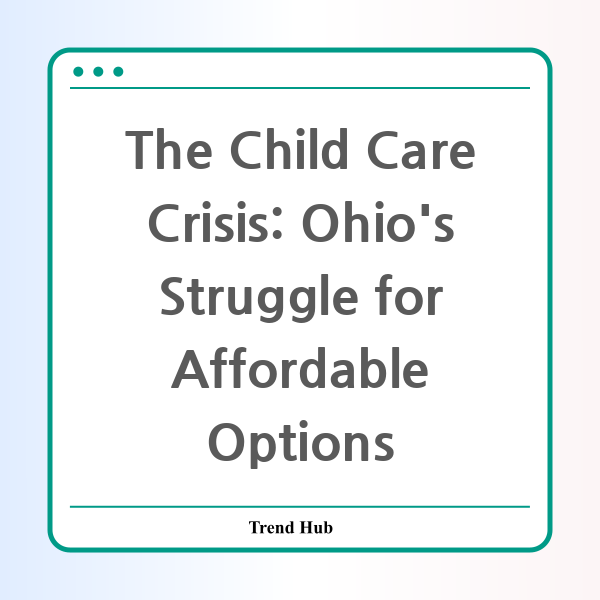* This website participates in the Amazon Affiliate Program and earns from qualifying purchases.

Are you a parent in Ohio struggling to balance work and child care? You’re not alone. Recent data reveals an alarming trend: many parents are forced to choose between staying home with their children and pursuing their careers, largely due to exorbitant child care costs. With 66% of parents indicating that they face challenges in managing child care expenses, the need for affordable, high-quality care is more pressing than ever.
According to a recent poll that surveyed nearly 800 registered voters in Ohio, 60% of mothers with young children expressed a desire to return to work if they had access to reliable child care. Unfortunately, most families are struggling to find such options, as two-thirds have reported difficulties in accessing high-quality child care facilities. The financial strain is compounded by rising costs of living. To put this into perspective, the average annual cost of child care for an infant can range upwards of $11,438 at a child care center and $8,919 for home-based providers. For preschoolers, these figures dip slightly to between $7,977 and $8,580.
So, what’s driving this crisis? Several factors contribute to the challenges Ohio families face. Firstly, inflation has escalated the costs of essential items such as food and diapers, which in turn places additional pressure on child care providers. Competitive wage rates for child care workers are also a significant concern; many earn near minimum wage, leading to high turnover and reduced stability in care environments. Furthermore, Ohio has the lowest eligibility level for publicly funded child care in the United States, making it even more difficult for working families to get the assistance they need.
This child care crisis has far-reaching implications not only for families but also for Ohio's economy. A staggering 87% of parents reported missing at least one day of work due to lack of child care, and nearly half had to reduce their working hours. Such statistics underscore the impact that child care accessibility has on workforce participation and ultimately, economic productivity. Recognizing this issue, 84% of Ohioans support increased state funding for child care to improve access, affordability, and quality.
Furthermore, there’s a growing consensus among voters across party lines—Republicans, Democrats, and independents alike—that the state should prioritize child care funding. Recent polls indicate that 77% of Republicans and 92% of Democrats support initiatives for enhanced child care access. This bipartisan agreement could pave the way for legislative changes that address the child care crisis in Ohio.
As state lawmakers convene, multiple proposed bills aim to tackle various aspects of this issue. These include tax credits for families, increased funding for public child care, and initiatives to promote employer involvement in child care support. While some progress has been made, including state vouchers aimed at aiding additional families, much more is needed to meet the growing demands of working parents.
In conclusion, the ongoing child care crisis in Ohio showcases the intricate balance between work and family life that many parents face. The increasing demand for affordable child care highlights the necessity for governmental support and legislative action. As more families advocate for quality child care solutions, it’s essential for Ohio to respond with the urgency this issue deserves. The time for change is now, and together, we can work towards a future where all parents have access to reliable, affordable child care, allowing them to thrive in their careers and provide for their families.
* This website participates in the Amazon Affiliate Program and earns from qualifying purchases.